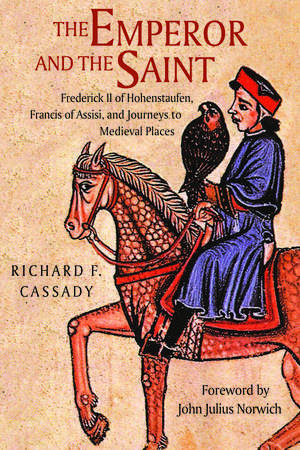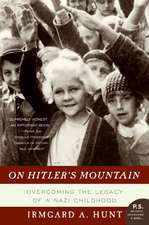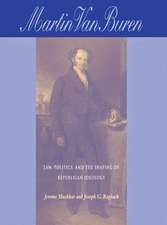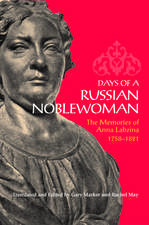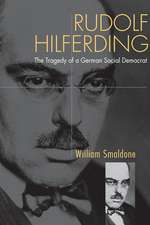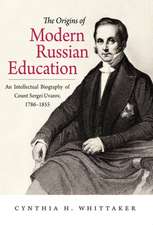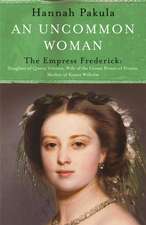The Emperor and the Saint: Frederick II of Hohenstaufen, Francis of Assisi, and Journeys to Medieval Places
Autor Richard F. Cassady Cuvânt înainte de John Julius Norwichen Limba Engleză Hardback – 29 mai 2011
The Emperor and the Saint is a vivid place-by-place telling of the life and times of the most enlightened, creative, and dynamic ruler of Medieval Europe, Frederick II of Hohenstaufen. St. Francis, who shared with Frederick a love of the natural world and was baptized in the same cathedral in Assisi, is a parallel and contrasting presence. Cassady enthusiastically guides the reader through the history and legends, pausing to describe the architecture of a cathedral, to marvel at the atmosphere of a town, to recommend the best place for a quiet picnic of local fare.
Frederick’s mother, Constance, was the daughter of the Norman Sicilian king, Roger II; Frederick’s father, Henry VI, was the scion of the German imperial family, son of the Holy Roman Emperor Frederick Barbarossa. When three-year-old Frederick was orphaned in 1198 he came under the guardianship of Pope Innocent III, marking the beginning of a conflict with the Papacy that was to last for the rest of his life—he was excommunicated twice. As a young boy he wandered freely through the streets of Palermo, a crossroad of Eastern and Western cultures. A man of insatiable curiosity, Frederick spent hours developing his knowledge of science and religion, art and philosophy. He traveled the length and breadth of Europe, even going to the Holy Land where, as commander of a Crusade, he negotiated a treaty with Sultan al-Kamil of Egypt, nephew of the great Saladin. Both respected and reviled, Frederick achieved great heights and faced grave disappointments. One failure was his dream to bring Italy and Sicily together in a united empire with a capital at Rome. When Frederick died in December 1250, he was robed in the white habit of a Cistercian monk to demonstrate his connection to both personal/political and religious worlds.
This engaging book is richly illustrated with photographs. Armchair historians, general readers of popular biography, and fans of travel literature will delight in Cassady’s lively presentation.
Preț: 206.78 lei
Nou
Puncte Express: 310
Preț estimativ în valută:
39.59€ • 42.26$ • 32.78£
39.59€ • 42.26$ • 32.78£
Carte disponibilă
Livrare economică 04-18 decembrie
Preluare comenzi: 021 569.72.76
Specificații
ISBN-13: 9780875804392
ISBN-10: 087580439X
Pagini: 472
Ilustrații: 59
Dimensiuni: 152 x 229 x 38 mm
Greutate: 0.84 kg
Ediția:1st Edition
Editura: Northern Illinois University Press
Colecția Northern Illinois University Press
ISBN-10: 087580439X
Pagini: 472
Ilustrații: 59
Dimensiuni: 152 x 229 x 38 mm
Greutate: 0.84 kg
Ediția:1st Edition
Editura: Northern Illinois University Press
Colecția Northern Illinois University Press
Recenzii
“The author has written a truly gripping biography of the Hohenstaufen Emperor Frederick II. Cassady offers many exciting insights, and brings this extraordinary personality well to life. Moreover, he has succeeded in shedding light on the social-historical and cultural context.”—Albrecht Classen, author of The Medieval Chastity Belt: A Myth-Making Process
“This book offers accessible history with a magnificent sense of place and personalities.” —Martin Marix Evans, author of Naseby 1645: The Triumph of the New Model Army
"There is a certain poetry in the juxtaposition of these two very different lives.... [This is] a good introduction to a rich and varied period of European history and to two of its more remarkable personalities. The excursions around the streets of Italian and German cities ... add romance and atmosphere and make one feel, as the best guidebooks do, that one would like to know the author better. The result is definitely a book to be consumed on an Italian hillside, with a bottle of Frascati in hand."
Notă biografică
Richard Cassady is an art historian and author of The Norman Achievement.
John Julius Norwich has written histories of Norman Sicily, Venice, the Byzantine Empire and the Mediterranean. His History of the Papacy will be published early in 2011. He has also written on Shakespeare’s history plays, on music and architecture, and most recently a volume of memoirs, Trying to Please.
Extras
“The book that you hold in your hands is the biography of a giant: a giant who bestrode late medieval Europe and who is infinitely more deserving of the title Frederick the Great than that pipsqueak king of Prussia on whom it was so unaccountably conferred. That giant’s fluency in six languages—including Arabic—was even rarer in the thirteenth century than it is now; he was a sensitive poet in whose court the sonnet was invented, a generous patron of the arts, a skilled general, a subtle statesman, and a superb naturalist. His book on falconry, De arte venandi con avibus, displays a knowledge and understanding of wildlife probably unparalleled in his time. It was to become a classic and is, I am told, still studied today. Frederick demonstrated his diplomatic skills when he recovered Jerusalem and the holy places for Christendom without shedding a drop of Christian—or Muslim—blood. (It was somehow characteristic of his relations with the papacy that he should have done so while under a papal sentence of excommunication.) A passionate intellectual curiosity—surely inherited from his Norman grandfather, King Roger II of Sicily—gave him more than a passing knowledge of philosophy and astronomy, geometry and algebra, medicine and the physical sciences. No wonder that he should have been given the sobriquet of stupor mundi; he was indeed, in his own highly individual way, a wonder of the world. . . . Being intended—as all really good books should be—not for scholars but for the average intelligent reader, it is, of all those [biographies] that I have mentioned, the most easily accessible. Frederick II was always a lucky man; in his latest biographer he can count himself fortunate indeed.”—from the Foreword by John Julius Norwich
Descriere
A fascinating look at an emperor, a saint, and the world they both inhabited
